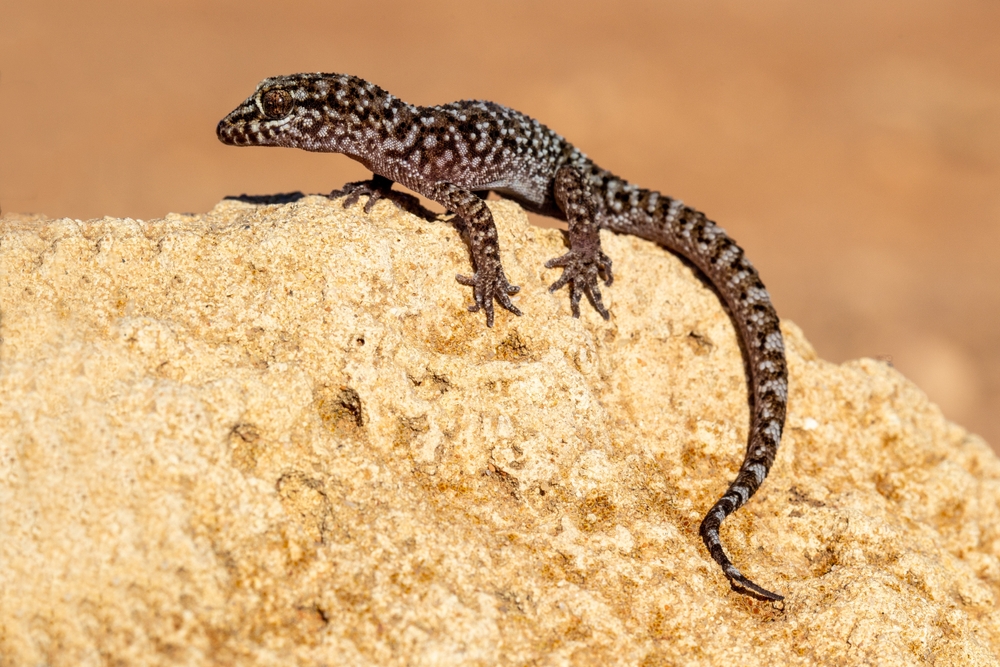The prickly gecko (Heteronotia binoei) is a species of small, slender-bodied lizard from Australia. It is a highly adaptable species, occurring across most of the country including human inhabitations in rural areas. The species gets its scientific name from British naturalist, Benjamin Bynoe who was a naval surgeon on the HMS Beagle.
The prickly gecko can be found in a variety of habitats from arid deserts to semi-tropical forests. This makes them an extremely hardy species for those looking for a “hands-off” lizard. Prickly geckos flicker their tails to communicate and when hunting. They are remarkably vocal and can be heard clicking and calling throughout the night. Keepers should be made aware that they can be extremely noisy and as a parthenogenic species, will require consistent rehoming of offspring.
The prickly gecko can be found in a variety of habitats from arid deserts to semi-tropical forests. This makes them an extremely hardy species for those looking for a “hands-off” lizard. Reproducing parthenogenically (without a male), makes them an excellent breeding project for beginner hobbyists.

Prickly Gecko (Heteronotia binoei) husbandry
A 45 cm3 vivarium would happily house a pair of these lizards but a larger enclosure may be beneficial once they begin to lay eggs. Zone 2 UV lighting should be provided. An overhead heat source should also be provided to produce a basking spot of around 32°C. Although they will not frequently bask, a flood spot or CHE will allow for natural thermoregulating.
There are currently no recognised subspecies of H. binoei (although island populations may eventually prove distinct), so providing a deep layer of arid substrate such as Bio Life Desert, alongside plenty of cork bark and slate, should provide a naturalistic setup that encompasses most of the species’ range.
A bioactive setup would also work extremely well for these small lizards who will actively shelter amongst snake plants and cacti. Humidity should be kept reasonably low at around 50%, though irregular spraying will help create beneficial fluctuations and simulate wild conditions. A varied diet of suitably sized insect prey should be provided a few times a week.
